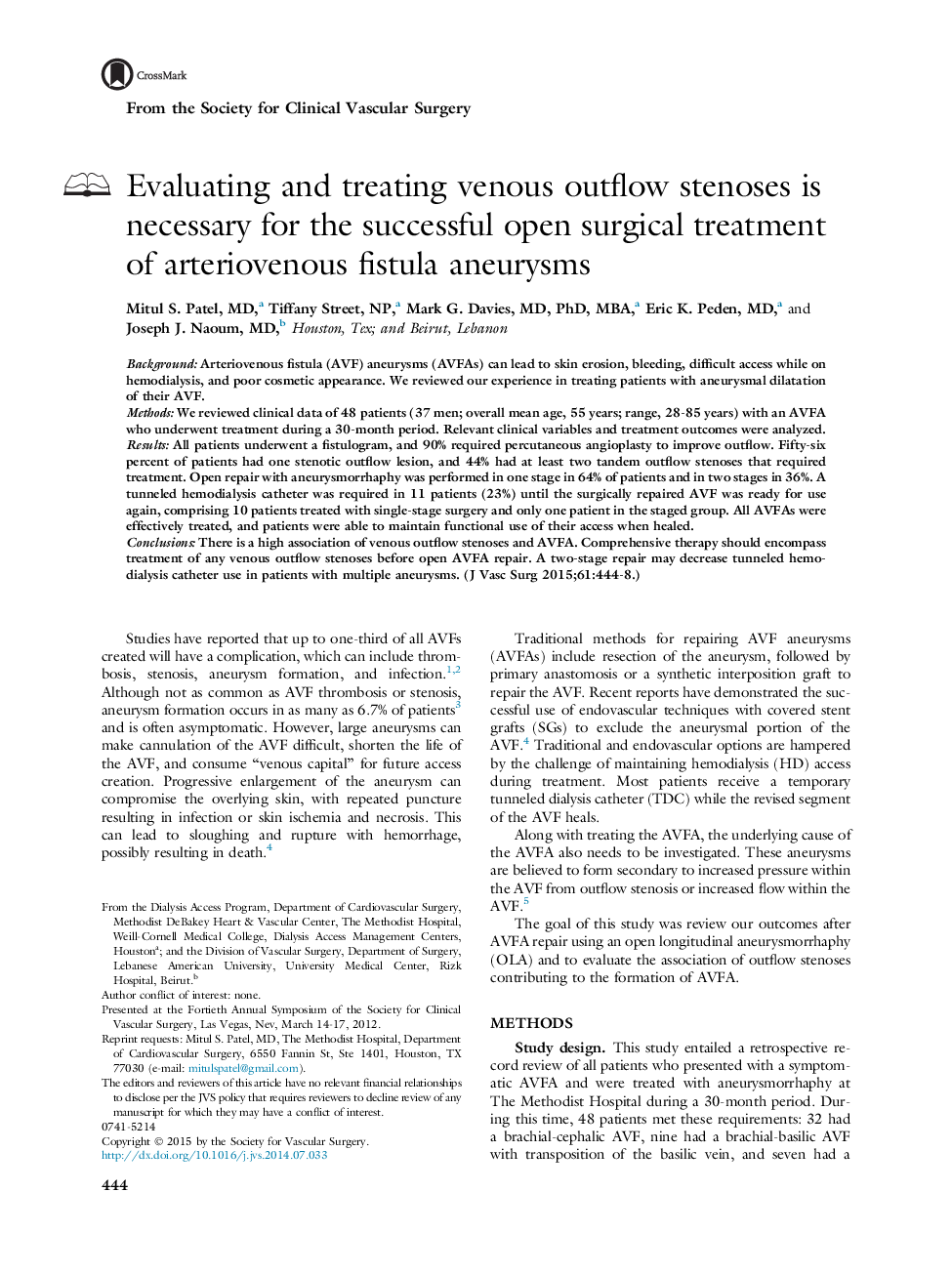| Article ID | Journal | Published Year | Pages | File Type |
|---|---|---|---|---|
| 5993555 | Journal of Vascular Surgery | 2015 | 5 Pages |
BackgroundArteriovenous fistula (AVF) aneurysms (AVFAs) can lead to skin erosion, bleeding, difficult access while on hemodialysis, and poor cosmetic appearance. We reviewed our experience in treating patients with aneurysmal dilatation of their AVF.MethodsWe reviewed clinical data of 48 patients (37 men; overall mean age, 55Â years; range, 28-85Â years) with an AVFA who underwent treatment during a 30-month period. Relevant clinical variables and treatment outcomes were analyzed.ResultsAll patients underwent a fistulogram, and 90% required percutaneous angioplasty to improve outflow. Fifty-six percent of patients had one stenotic outflow lesion, and 44% had at least two tandem outflow stenoses that required treatment. Open repair with aneurysmorrhaphy was performed in one stage in 64% of patients and in two stages in 36%. A tunneled hemodialysis catheter was required in 11 patients (23%) until the surgically repaired AVF was ready for use again, comprising 10 patients treated with single-stage surgery and only one patient in the staged group. All AVFAs were effectively treated, and patients were able to maintain functional use of their access when healed.ConclusionsThere is a high association of venous outflow stenoses and AVFA. Comprehensive therapy should encompass treatment of any venous outflow stenoses before open AVFA repair. A two-stage repair may decrease tunneled hemodialysis catheter use in patients with multiple aneurysms.
